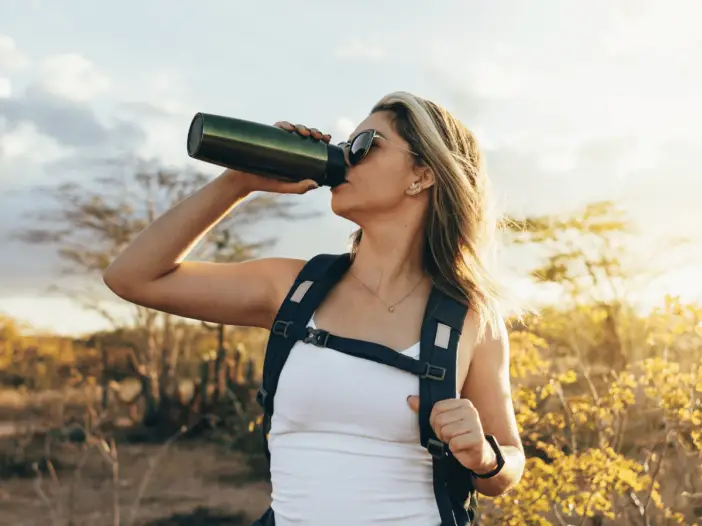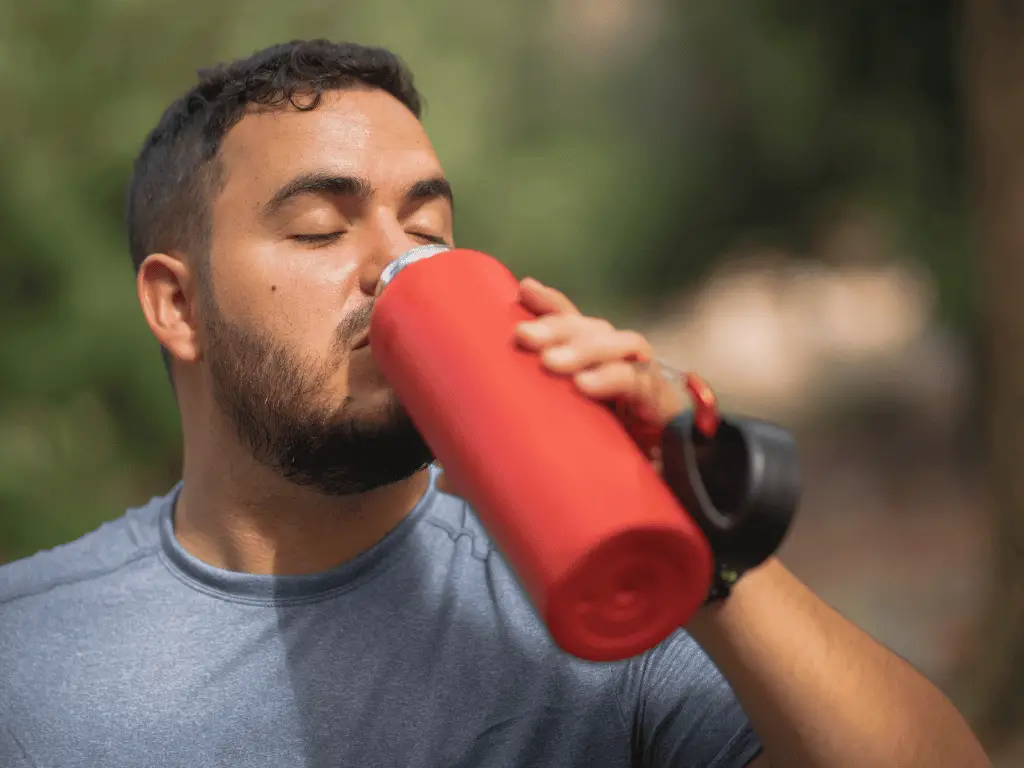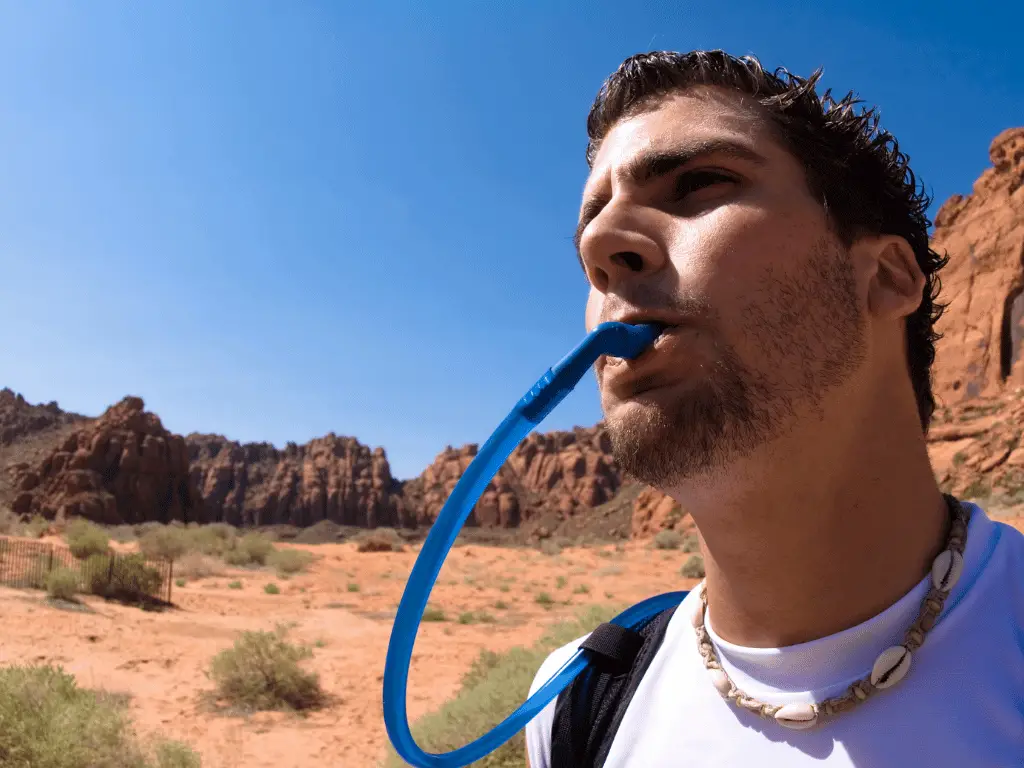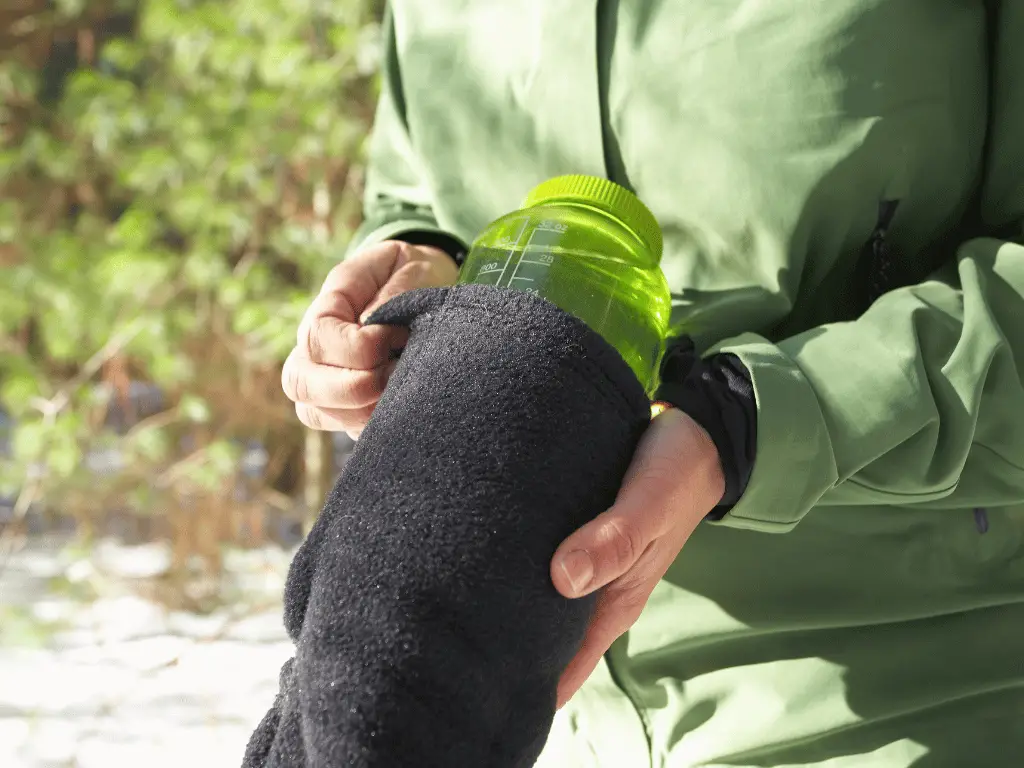
Hiking Tips
Knowing how to keep water cold while hiking will ensure you enjoy refreshing sips long into your hike. Follow our tips and make that warm water a thing of the past
How to Keep Water Cold on a Hike
As a hiker, you know the feeling of relief after a long day on the trail when you take a sip of water from your bottle and it’s no longer cold. Staying hydrated is one thing, but we all want to enjoy that refreshing cold water taste.
This article offers numerous tips on how to keep water cold while hiking. We’ll explore different ways, from buying the right water bottle or hydration pack to several other DIY tricks to keep your water cold.
This will hopefully offer you all the information you need to enjoy your outdoor adventures without worrying about the temperature of your water.
Use an Insulated Water Bottle
An insulated water bottle is essential for hikers seeking to keep their water cold and refreshing throughout their outdoor adventures. With its unique design and insulation properties, an insulated water bottle offers several advantages, making it a superior choice to regular water bottles. Let’s explore the benefits of using an insulated water bottle for hiking:

Temperature Regulation: The primary advantage of an insulated water bottle is its ability to regulate the temperature of the contents.
Whether you want to keep your water cold on a scorching hot day or maintain the warmth of your beverage in colder temperatures, an insulated bottle excels at preserving the desired temperature for an extended period.
This feature ensures you can enjoy a refreshing gulp of cool water whenever you need it during your hike.
Extended Cooling Time: Insulated water bottles are specially designed to provide prolonged cooling. They feature double-wall construction with a layer of insulation in between, which acts as a barrier to minimise heat transfer. This insulation slows down the rate at which external temperature affects the contents inside.
Durability and Strength: Hiking with rugged terrains and potential impacts can be physically demanding. Insulated water bottles are built to withstand such conditions.
They are often constructed from durable materials like stainless steel or BPA-free plastic, which can endure accidental drops, bumps, and rough handling. This durability ensures your water bottle remains intact and functional throughout your hike.
Condensation Control: Have you ever experienced the annoyance of water droplets forming on the outside of a regular water bottle? Insulated water bottles solve this problem by minimising condensation.
The insulation layer acts as a barrier, preventing temperature differences between the contents and the external environment, causing condensation on the bottle’s surface. This feature keeps your backpack and hands dry.
Versatility and Compatibility: Insulated water bottles come in various shapes and sizes, offering versatility to suit different preferences and needs. They often feature wide-mouth openings that allow easy filling, cleaning, and adding ice cubes if desired.
Many models also have compatible lids that accommodate drinking straws, making it convenient to sip water on the go without having to unscrew the cap.
Additionally, insulated water bottles can be used for hot and cold beverages, making them suitable for year-round hiking adventures.
Investing in an insulated water bottle for hiking offers numerous advantages. From maintaining the temperature of your water to withstanding rugged conditions to minimising condensation, these bottles provide reliable and efficient hydration solutions.
So, before your next hiking trip, equip yourself with an insulated water bottle and enjoy the benefits of refreshing, cold water whenever and wherever you venture into the great outdoors.
Invest in a High-Quality Hydration Pack
A hydration pack is a popular and practical solution for hikers who want to keep their water cold while enjoying outdoor adventures. These backpacks are designed to carry water reservoirs and offer several advantages, making them an excellent choice for hydration on the trail. Let’s explore the benefits of using a hydration pack for keeping water cold while hiking:

Large Water Capacity: Hydration packs typically have a larger water capacity than regular water bottles. They feature a dedicated hydration reservoir, also known as a bladder, which can hold several litres of water. This ample capacity ensures an abundant supply of cold water throughout your hike, reducing the need for frequent refills.
Insulated Reservoir Sleeve: Many hydration packs feature an insulated sleeve or compartment to hold the water reservoir. This sleeve helps to maintain the temperature of the water inside, keeping it cold for an extended period.
The insulation prevents external heat from transferring to the water, ensuring a refreshing and cool drink whenever needed.
Hands-Free Hydration: They have a tube and bite valve that allows you to drink water without stopping or reaching for a water bottle. The tube is usually positioned near the shoulder strap, making it convenient to access and sip water while on the move. This feature enables continuous hydration.
Convenient Access and Organisation: Hydration packs are designed with practicality in mind. They often include multiple compartments and pockets, allowing you to efficiently organise your gear and essentials. This organisation ensures that your water reservoir is securely placed and easily accessible.
Some packs even feature external mesh pockets or straps holding additional water bottles, allowing you to carry extra cold water or other beverages alongside your hydration bladder.
Comfortable and Stable Fit: Hydration packs are specifically engineered to provide a comfortable and stable fit on your back. This snug fit ensures the pack remains in place and minimises bouncing or shifting while you hike, providing a relaxing and hassle-free experience.
They feature adjustable shoulder straps, chest straps, and waist belts, allowing you to customise the fit according to your body size and hiking preferences.
Protection from Sun and External Elements: Many hydration packs are constructed from durable materials that offer protection against the elements. They are designed to withstand sun exposure, abrasions, and potential impacts on the trail.
The reservoir compartment is often positioned away from direct sunlight, preventing the water from heating up due to prolonged sun exposure. This feature helps maintain the water’s cold temperature for an extended period.
A hydration pack is an excellent choice for hikers who want to keep their water cold while on the trail. With larger water capacity, insulation features, hands-free drinking, convenient access, and a comfortable fit, these packs provide a practical and efficient solution for hydration during outdoor activities.
Before embarking on your next hiking adventure, consider investing in a hydration pack to ensure a constant supply of refreshing and cold water.
DIY Tricks for Keeping Your Water Cold
If you’re looking for do-it-yourself (DIY) tips to keep your water cold while hiking, you can try several effective and budget-friendly methods. These DIY techniques can help you maintain a refreshing temperature for your water during your outdoor adventures. Here are some tips to keep your water cold while hiking:
Pre-Chill Your Water: One simple DIY method is to pre-chill your water before heading out on your hike. Fill your water bottle or hydration bladder with cold water from the refrigerator, or add ice cubes to lower the initial temperature. Starting with cold water can delay the warming process, and enjoy a chilled drink longer.

Use Insulated Bottle Covers: Insulating your water bottle with DIY covers can help maintain your cold temperature. These covers act as an additional insulation layer, preventing heat transfer from the environment to the water inside. Wrap the cover around your water bottle, securing it with elastic bands and Velcro straps.
Wet Cloth Wrapping: Another DIY technique is to wrap a wet cloth or bandana around your water bottle. Wet the cloth with cool water and wrap it tightly around the bottle. As the water evaporates, it creates a cooling effect, helping keep your water cold for longer. Make sure to periodically re-wet the cloth to maintain its cooling properties.
Utilise Cold Packs or Ice Cubes: You can use DIY cold packs or ice cubes to keep your water cold. Freeze water in a reusable container or zip-lock bag and place it alongside your water bottle in your backpack. The cold pack or ice cubes will gradually melt, cooling the surrounding area and helping to maintain the temperature of your water.
Store Water in the Shade: When taking a break during your hike, find a shady spot to store your water bottle. Look for the natural shade provided by trees, or use a small towel or cloth to create a makeshift shade by draping it over your water bottle. Direct sunlight can quickly heat your water, so keeping it in a shaded area helps prevent excessive warming.
Insulate Your Backpack: Insulating your backpack can help minimise the impact of external temperatures on your water. Line the inside of your backpack with an insulating material such as foam sheets or reflective bubble wrap. This layer of insulation acts as a barrier, reducing heat transfer and helping to maintain the coolness of your water.
Drink Frequently and Stay Hydrated: While not a direct cooling method, drinking frequently helps to replace the water you consume and prevents it from reaching ambient temperature.
Stay hydrated and enjoy your refreshing and cold water during your hiking adventures! These DIY tips are effective in keeping your water cold while hiking. Still, the duration and effectiveness vary depending on factors such as ambient temperature and exposure to sunlight. It’s always a good idea to start with cold water and implement multiple methods to maximise the cooling effect.
How to Keep Water Cold While Hiking – Conclusion
There’s nothing more frustrating than warm water ruining your outdoor experience. Thankfully, by following these tips on how to keep water cold while hiking, this issue can become a thing of the past.
Remember to choose the right water bottle, invest in a high-quality hydration pack, and consider some additional DIY tactics. With these tools in hand, you can embark on your next adventure with confidence, knowing that you’ll be able to enjoy the cool, refreshing taste of ice-cold water wherever you go.
So cheers to staying hydrated, staying cool, and embracing all that the great outdoors has to offer!
Like Our Article? Please Pin it!


Leave a Reply